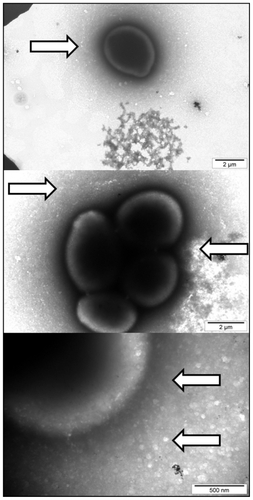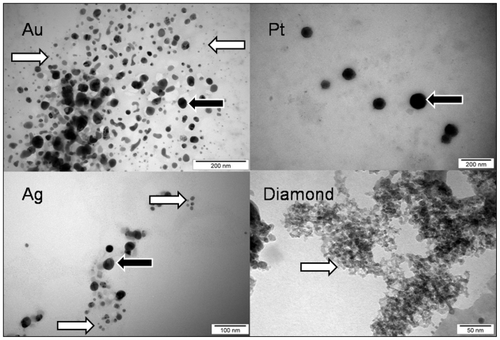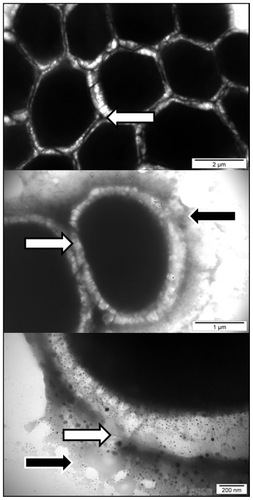Figures & data
Figure 2 Staphylococcus aureus and Candida albicans. None of the toxicologic or destructive effects of the procedure can be seen.
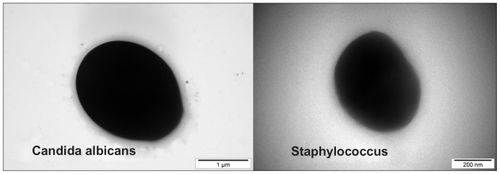
Figure 3 Interaction between Staphylococcus aureus and diamond nanoparticles. Arrows indicate nanoparticles nonspecifically attached to the microorganisms.
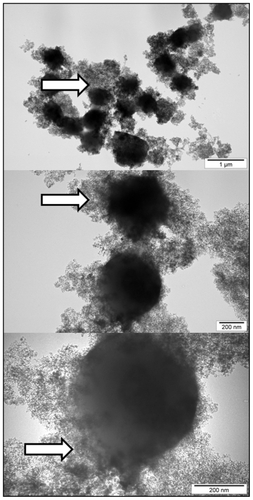
Figure 4 Interaction between Candida albicans and diamond nanoparticles. Arrows indicate nanoparticles surrounding cells very closely.
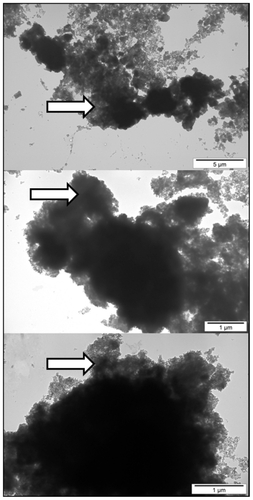
Figure 5 Interaction between Staphylococcus aureus and silver nanoparticles. Arrows indicate nanoparticles located at specific points on the cells, attached to the substance released by microorganisms.
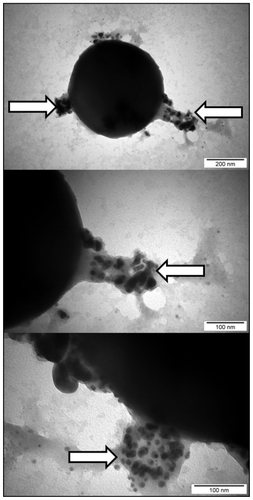
Figure 6 Interaction between Candida albicans and silver nanoparticles. White arrows indicate nanoparticles attached to the substance released by microorganisms. Black arrows indicate distorted cells, a disintegrated cell wall, and cytoplasmac membrane.
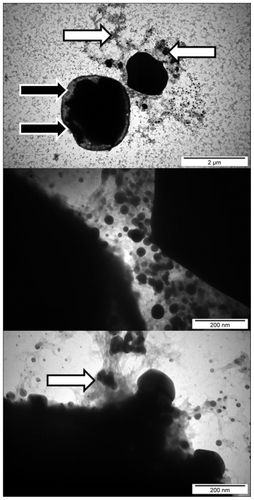
Figure 7 Interaction between Staphylococcus aureus and gold nanoparticles. White arrows indicate nanoparticles trapped by the biofilm and the substance released by cells. Black arrow indicates distorted cell wall.
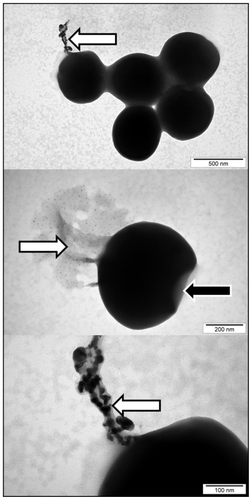
Figure 8 Interaction between Candida albicans and gold nanoparticles. Arrows indicate the substance of different electron density released by cells.
